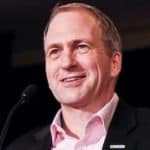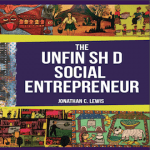‘the Hidden Tragedy of the Poor’: An Interview With Jonathan Morduch, Executive Director of the Financial Access Initiative
Jonathan Morduch is professor of Public Policy and Economics at the NYU Wagner Graduate School of Public Services, and executive director of the Financial Access Initiative. In the nineties he became interested in the subject of microfinance, following the success of the Grameen Bank in Bangladesh, founded by Nobel Laureate Muhammed Yunus.
“Here was a new kind of bank that could reach poor people in a way traditional institutions never could,” he said. “The bank seemed to solve fundamental problems for the poor. It was interesting from an academic point of view, but it also attracted me as a way to make the world a better place.” However, since then his views on microfinance have changed.
Morduch spoke with André de Vos in an interview published on Upsides (cross-posted with permission). Their conversation is transcribed below.
André de Vos: Why have you changed your opinion on microfinance?
Jonathan Morduch: In researching microfinance, we found that we know very little about the day-to-day financial lives of the poor. I still think the instrument of microcredit has beauty, but it also has distorted our view. We see the poor through the lens of microfinance. In that view the poor are frustrated entrepreneurs that you help by providing capital to run their own businesses. But if you look closely at microcredit, you see that it resembles consumer credit more than anything else. The borrower starts repaying immediately once she gets the loan, which doesn’t make much sense if you need to invest in a business.
Also, evidence is mounting that loans are used for many purposes beyond business. Some studies show that perhaps half the money from microcredit goes to business. The other half is used for basic expenses like a bus ticket, school fees or health insurance. Of course, this is not often mentioned, even though the microfinance institutions are aware of this. But it’s difficult for them to change their language. It’s easier to attract donors if you say you help the poor start their own business to get out of poverty.
ADV: So what is really the problem?
JM: 2.5 billion people live on two dollar a day. For the book Portfolios of the Poor, my colleagues Daryl Collins, Orlanda Ruthven, and Stuart Rutherford started doing very detailed research in Bangladesh, India and South Africa on the way the poor manage their finances. They used accountants’ tools to see how households earn and spend money. We came to some remarkable conclusions. The poor are not as bad at financial planning as we always thought. They try to save, to plan ahead. They have to, because the real problem is not that they make little money, but that the money comes in very irregularly. Two dollar a day is only an average. But they might make ten dollars a day or even more and then earn nothing at all for some time. So they need to plan ahead to pay future bills.
What makes it difficult is that most banks are not interested in the poor. The savings of the poor are too small, as is their need for credit. So the households often create their own mechanisms. They start saving clubs, they deposit money with a trusted person. Sometimes they pay to save money, whereas richer people expect to get interest. Even with very low incomes they sometimes are able to save 20 percent or 30 percent of their income.
ADV: Your conclusion is that the poor’s attitude towards money is not that different from that of the average person.
JM: Behavioural finance shows that all people have a sometimes irrational attitude towards money. The poor are no different. But because they have so little money, they get into financial problems more easily. A person like myself tends to have a much more regular income pattern than a typical poor person. That makes it easier for me to plan ahead. My insurance, my rent and other expenses are automatically transferred from my account, I can’t even forget to pay them. As a result I never see most of my money.
The poor don’t have that advantage. They get all their money in cash and then they have to make complicated financial decisions – which they do on a regular basis. Our research shows that the poor use a lot of financial instruments to cope – formal, informal, sometimes microcredit. In this sense, they have a surprisingly rich financial life. But the instruments are not always very reliable or flexible. It’s the hidden tragedy of the poor that they lack the right instruments to make the most of what little money they have.
ADV: Why did you start researching poor Americans [in the U.S. Financial Diaries project]?
JM: Portfolios of the Poor opened up new conversations about the future of microfinance. It started new ways of thinking about the poor. Maybe the poor in the West and in developing countries aren’t that different, even though the income levels are. We don’t really know, we don’t do much research on the poor in the West. It seemed an interesting line of research, and some donors, like the Ford Foundation and Citi Foundation, were interested in the subject as well. They supported our research. For me personally, it gave me new insights. I live in New York, but for this research I spent time with people I don’t normally meet.
ADV: What do the results show?
JM: We found strong similarities between the poor in the developing countries and those in the U.S. You see the same patterns: irregular income, with high peaks and deep troughs, multiple jobs, no money for health insurance. And also, at least in the U.S. – it might be different in Europe – although most low-income households have access to banks, they still use informal finance often (for example, borrowing or saving with family and friends), not unlike the poor in developing countries.
ADV: How does this affect the way we should help the poor?
JM: They need to get better access to financial institutions which can help them plan. At the moment they are not an attractive segment for most banks. But modern instruments like smartphones can make regular financial services more affordable. The West might even learn here from developing countries. I don’t think there is a viable business case yet for commercial financial institutions for the poorest communities, but new technologies may help by cutting costs. It’s significant that Grameen Bank II nowadays is more important as a savings bank than as a money lender – while even Yunus once claimed that the poor are too poor to save.
ADV: Is there still a future for microcredit?
JM: Definitely. But it should not only focus on entrepreneurs. Poor people that are not self-employed should get access to credit as well. We need to make microcredit available to non-entrepreneurs – and thus aim for billions of customers.
André de Vos is a freelance finance journalist based in Utrecht, the Netherlands.
- Categories
- Education




